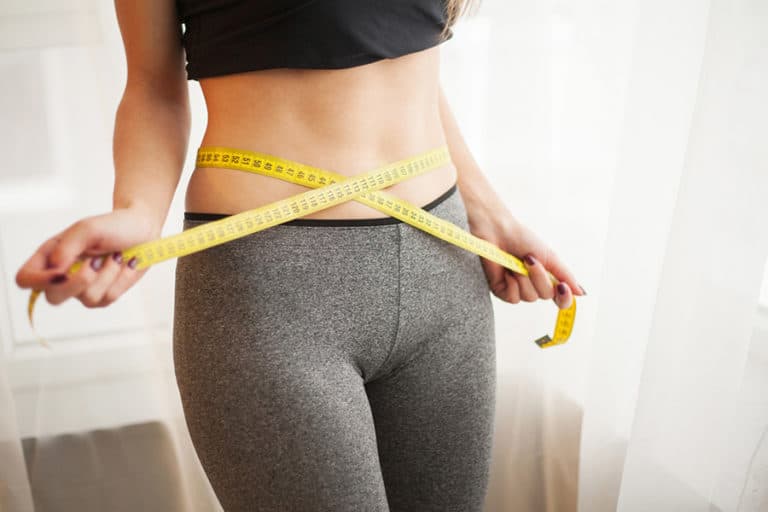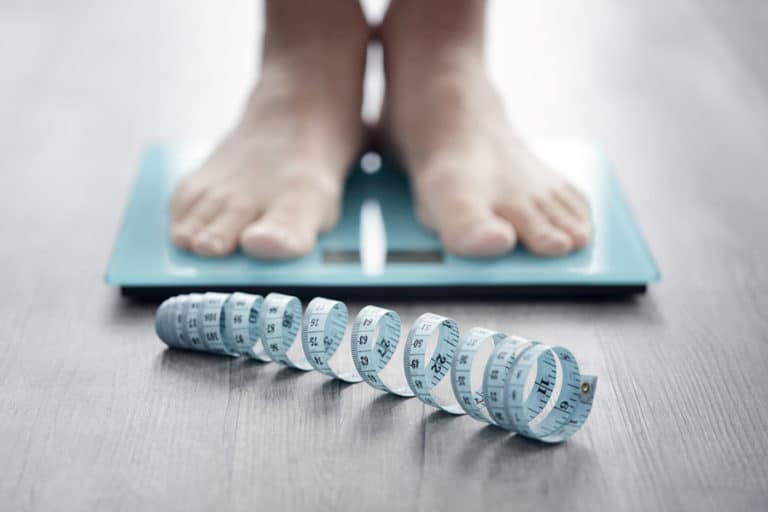Cycling for Weight Loss: Ride to Lose Fat and Stay Fit

An excellent workout for your lower body and core. An amazing stress buster. A perfect fat burner. Cycling can be all these if done right. Read on to know more about cycling for weight loss and fit living.
Cycling is one of the most popular exercises globally. It is a fantastic aerobic exercise that pumps up your heart rate and keeps you fit. Cycling is a great low-impact exercise to burn away those stubborn calories without hurting any muscles or joints.
So, if you’re looking for a great way to lose weight, cycling is a perfect choice! Bikes out, helmets on. Let us look at the dynamics of cycling for weight loss in detail.
Is biking a good exercise?
Biking is often lauded as a great form of exercise, and with good reason. People of all ages and abilities can enjoy a good spin on their bikes. Biking is a great option, whether you’re looking to improve your fitness or simply enjoy the outdoors. Since it is an activity that is normally done outdoors, it also provides an excellent opportunity to get some fresh air and soak up some ‘sunshine vitamin’ (vitamin D).
Cycling is a full-body workout that engages all major muscle groups. The pedaling motion works the legs and glutes, while the arms and core are used to maintain balance. In addition, cycling is an excellent cardiovascular [1]PubMed: Health benefits of cycling: a systematic review workout. It pumps up your breathing and heart rate, helps reduce the risk of heart disease, and ensures a good supply of oxygen-rich blood to every part of your body.
It is also a great activity for your brain. Outdoor biking, in particular, can refresh and rejuvenate the mind. The exercise that cycling provides your body directly, impacts the health of your brain. The fact that it engages your eyes, concentration, and complete focus makes it an excellent activity for those looking to improve their mental functioning and well-being. Several peer-reviewed studies [2]National Library of Medicine: The effect of cycling on cognitive function and well-being in older adults have shown conclusively that biking can improve brain health, memory, and concentration.
Cycling is a low-impact workout, making it easy on your joints and muscles. This is because you are not bearing your body weight when you cycle. So, it is an ideal choice for people who are overweight or obese, as well as those with joint problems. It is also an excellent option for pregnant women and seniors.
Cycling for weight loss
Cycling is a form of cardio exercise that works out multiple muscle groups. This makes it an effective workout for losing weight. It also tones your muscles and improves your overall body shape. By engaging the muscles in your core, cycling can help to tone your abs and reduce belly fat.
Indoor vs outdoor cycling for fat burn
We know that cycling is a great option for those looking to lose weight and that it can be done both indoors and outdoors. But what’s the best option for weight loss: indoor or outdoor cycling?
Outdoor cycling
The main difference between indoor and outdoor cycling is the level of resistance. Outdoor cycling generally requires more effort, as you are pedaling against wind resistance and terrain. This means that you’ll spend more calories cycling outdoors than indoors.
Outdoor bike ride engages more muscles. In addition to pedaling, you also need to use your arms and core muscles to maintain balance. This means that you’ll tone more muscle groups cycling outdoors.
Outdoor bike rides can also be more motivating. Cycling in nature can help to improve your mood and mental well-being. The fresh air and scenery can provide a much-needed boost of energy and endorphins.
Indoor Cycling
Cycling indoors [3]National Library of Medicine: Health Benefits of Indoor Cycling: A Systematic Review offers a more controlled environment, which can be helpful for those new to exercise or looking to ease into things. You can control the resistance level on an indoor bike, which means you can tailor your workout according to your fitness level. If you increase the resistance on your indoor bike, you can get a good workout, which will help you slim down faster.
Cycling indoors is also a great option if you’re short on time. Because you don’t have to worry about things like traffic or terrain, you can get a quick workout without traveling far.
Parameters to keep in mind
When you start cycling to lose weight, there are a few key parameters to keep in mind. Speed, distance, and intensity are all important factors to consider. The total number of calories burned will also vary based on these factors. Let’s look at some parameters to keep in mind when cycling to burn fat:
Speed
Cycling at a moderate speed of 12-14 mph is a good option for those looking to lose weight. This speed will help you burn calories and improve your fitness without tiring you out too much.
Distance
Cycling a distance of 20-30 miles is a great way to burn calories and lose weight. This distance will help you burn a significant number of calories, especially if you modify your intensity accordingly.
Intensity
Riding at a high intensity can help you to burn more calories. However, it’s important to find a balance that works for you. Cycling at too high an intensity can lead to injury or burnout.
Does cycling burn belly fat?
Cycling can help you burn belly fat, but it’s not the most effective exercise for it. This is primarily because spot reduction often tends to be more of a myth. You cannot always target a specific area of your body for fat loss. Weight loss is a more general process that occurs when you create a calorie deficit by burning more calories than you consume.
Studies [4]PubMed: Effect of High-Intensity Interval Training on Total, Abdominal and Visceral Fat Mass: A Meta-Analysis have shown that HIIT (high-intensity interval training) biking workouts(cycling at high intensity for 30-60 seconds) can effectively burn belly fat. It has been observed that in general, people who cycle for 150 minutes a week tend to lose an average of four inches from their waistline after eight weeks.
Cycling can help you to burn belly fat by burning a significant number of calories. Plus, it does engage your core muscles for movement and balance. If you’re specifically looking to target belly fat, you may want to consider combining it with other intense fat-burning exercises. Having a personal trainer can also help you create a workout routine tailored to your goals.
Cycling to burn fat: do’s and don’ts
When it comes to cycling to shed a few pounds off your body, there are a few things you should and shouldn’t do. Here’s a quick overview of what to keep in mind:
Dos
- Have your target weight clear in your mind. Consulting a personal trainer can help you fine-tune the specifics of your biking for maximum fat burn.
- Experiment with different speeds, distances, and intensities to find what works for you.
- Make sure to warm up before you ride and cool down afterward. Try to stretch your muscles before and after riding to prevent injury.
- Drink plenty of water before, during, and after your ride. Cycling can be dehydrating. You can carry a bottle of water, juice, unsweetened sports/energy drinks, or electrolyte water to keep yourself hydrated.
- Wear proper gear, including a helmet, to help keep you safe while riding. Choose a helmet that has been specifically designed for cyclists.
- Wear comfortable clothing and shoes that won’t rub or chafe. Wear clothes that are breathable but fit properly. Cyclists may benefit from buying padded biking shorts that help to prevent saddle sores.
- Invest in a good-quality bike that is the right size for you. A comfortable bike will make riding more comfortable, effective, and safe.
- Ride with a friend or in a group to stay motivated.
Don’ts
- Don’t try to lose weight too quickly. Cycling is a great workout, but it’s not a quick fix. Losing weight takes time and patience.
- Don’t ride beyond your abilities. It’s important to know your limits. Cycling beyond your abilities can lead to burnout, muscle strain, or injury.
- If you are riding outdoors, be aware of traffic and road conditions. Cycling in traffic can be dangerous.
- Don’t forget to eat properly. Eating a healthy diet is important for healthy weight management and maintaining fitness. Cycling can be strenuous, so make sure to eat plenty of nutritious foods, including fruits, vegetables, lean proteins, and whole grains.
Other benefits of cycling
Weight loss, body toning, and excellent workout are not the only benefits to be reaped from a good spin session on your indoor or outdoor bike. Cycling is not only great for weight loss. It has several other benefits.
- Cycling can help to improve your cardiovascular fitness, muscular strength, and endurance.
- People who are new to exercise, workouts, and fitness can easily and safely transition into it through cycling.
- Cycling is a low-impact form of exercise, so it is easy on your joints. In fact, cycling might be great for the joints since it does not damage knee joints like running does.
- Regular cycling can improve the cyclist’s focus and concentration.
- It is also an excellent stress-buster and has been shown to help improve mental health and well-being.
- A great form of exercise for people of all ages and fitness levels, it is an activity loved by everyone. So, if you’re looking to lose weight, tone your body, and improve your overall health, cycling is a great option.
Tips for Safe Cycling
Enjoyable and low on impact as it is, cycling can also come with its own share of health and safety risks. Here are some tips to help you stay safe on your bike:
Wear gloves
Cycling gloves help to absorb vibrations, protect your hands in case of a fall, and provide grip.
Wear proper footwear
Cycling shoes are designed to provide comfort and support while you ride. They also help to increase pedaling efficiency and prevent slips.
Wear reflective gear
Wearing reflective gear, such as a vest or armbands, will help to make you more visible to drivers, especially in low-light conditions. Make sure your bike has proper reflectors and lights as well.
Follow the rules of the road
Cycling is a great way to get around, but it’s important to follow the rules of the road. Ride in the same direction as traffic, and obey all traffic signals and signs. Be aware of the traffic around you, and ride in a defensive manner. This means being predictable, signaling your intentions to other people on the road, and being prepared to take evasive action if necessary.
Avoid distractions
Cycling is a great workout, but it’s important to stay focused on the task at hand. Avoid distractions such as music, phones, and other people. If you are riding with a group, try not to talk to or race against one another as you might risk an accident.
Quality of your track
Make sure you are riding on a quality track. Avoid potholes, glass, and other obstacles that might cause you to fall. Avoid wet or slushy roads, as they can be very slippery.
Warm-up and cool down
Stretch, warm up and cool down before and after your ride. This will help to keep your muscles supple and relaxed and prevent injuries. Start slowly to get your heart rate and energy levels pumped up. Gradually move on to a faster pace. Your speed and movements must be in keeping with your body composition, aerobic capacity, and overall physical endurance levels.
Conclusion
With a calorie-burning capacity of at least 300-400 calories per hour of moderate biking, riding a bicycle is a great way to lose some extra pounds. Cycling also helps to improve your cardiovascular fitness, build endurance, and develop muscular strength. Cycling is also an excellent stress-buster.
If you have access to a lovely forest rail or a rugged mountain, try mountain biking or a relaxing short ride through the woods. You will feel your extra pounds melt away along with all your stress as you spin along in the lap of nature.
So, if you’re looking to lose weight, tone your body, and improve your overall health, cycling is a great option. Just be sure to follow some basic safety tips, and you’ll be good to go!
FAQs
Got more questions or doubts about cycling? Here are some frequently asked questions that will hopefully help you out.
References
| ↑1 | PubMed: Health benefits of cycling: a systematic review |
|---|---|
| ↑2 | National Library of Medicine: The effect of cycling on cognitive function and well-being in older adults |
| ↑3 | National Library of Medicine: Health Benefits of Indoor Cycling: A Systematic Review |
| ↑4 | PubMed: Effect of High-Intensity Interval Training on Total, Abdominal and Visceral Fat Mass: A Meta-Analysis |







